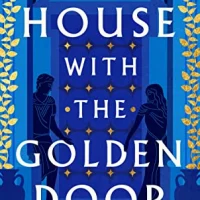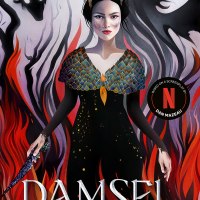Book Review: The Rift Uprising by Amy S. Foster
A review copy was provided by the publisher in exchange for an honest review. All opinions are my own.
 The Rift Uprising by Amy S. Foster
The Rift Uprising by Amy S. Foster
Mogsy’s Rating: 3 of 5 stars
Genre: Science Fiction, Young Adult
Series: Book 1 of The Rift Uprising Trilogy
Publisher: Harper Voyager (October 4, 2016)
Length: 400 pages
Author Information: Website | Twitter
The first thing you should know about The Rift Uprising is that while it may be published under adult sci-fi and fantasy imprint Harper Voyager, it is patently, most assuredly, a Young Adult novel. Thinking there would be at least some crossover appeal, I did have to go through a brief adjustment period to alter my expectations, because I believe target audience matters. Indeed, once I donned my “YA reader” hat, I found this one easier to enjoy, and I think it has quite a lot of potential for fans of YA.
The story takes place in 2020, following the life of a seventeen-year-old girl named Ryn Whittaker, who is a Citadel—an elite super-soldier created by a secret military program in response to more than a dozen mysterious rifts opening around the world back in the mid-2000s. These rifts turned out to be portals to alternate Earths, and when it became clear that scientists were unable to close or control what came out of them, governments around the world decided to cover the whole thing up in a massive, coordinated global conspiracy.
An important development that came out of this though, was the arrival of a more advanced humanoid race from a parallel world who gave humanity the technology to protect themselves and guard the rifts. This technology involved implanting individuals with a cybernetic chip that would enhance their physical and mental abilities, turning them into powerful fighting machines. Problem was, adults didn’t do well on the implants; every single one who was a part of the initial experiment died. So instead, the government decided to put this technology in seven-year-olds (because somehow, the scientists were able to determine that young, still-developing brains were more resistant to the chip’s fatal effects) without the children’s OR their parents’ knowledge and consent. These kids would eventually become the Citadels, once their implants get activated when they turn fourteen.
This is what happened to Ryn, who has been living a double life for the last three years, ever since she found out what was done to her. At home she has to pretend to be a normal teenager in front of her family, who are blissfully unaware of the truth behind rifts and Citadels, and think that their daughter is part of a gifted government school program. In reality, Ryn patrols a nearby rift, either putting down enemies that come through or helping relocate non-hostile otherworld entities called “Immigrants” to one of the many sprawling internment camps around the world (which are also covered up by their respective governments, of course).
I’ve gone into the specifics of the premise because I feel so much of the Rift conspiracy doesn’t hold up to scrutiny. A large, widespread plot involving thousands upon thousands of people in more than a dozen countries, hiding the fact that they’ve been experimenting on hundreds of children (and praying that their parents are all idiots and won’t notice) while stashing countless hordes of interdimensional aliens in gigantic compounds located in thickly settled areas around the globe? I find it a little too farfetched and hard to believe that the world has been kept in the dark for so long, especially in this age of satellites and air travel, hungry media outlets and wary whistleblowers, class-action lawsuits and social media. In some ways, reading this book reminded me of how I felt while reading Divergent—that is, the setup is really cool, but a lot of the explanations are either iffy or require lots of logical leaps. If you don’t mind rolling with the punches though, or if you are reading this for the story and not the world-building, then this won’t be an issue.
Also to keep in mind is the fact that, as with most YA novels, there are certain tropes to watch for. There’s a romance, which I’m tempted to label instalove, because from the moment a boy named Ezra walks through the rift into Ryn’s world, she becomes utterly smitten with him. However, because all Citadels are conditioned to fly into a berserker rage the moment they make skin-on-skin contact with the object of their affection or anyone they feel even remotely attracted to (which is weird, because if you could condition any kind response into the Citadels, wouldn’t it make more sense to make them, say, violently ill at the thought of sex, instead of just plain violent? Less chance of putting your own soldiers or any number of innocent bystanders in the hospital and creating a media incident, if you’re inclined to keep the lid on a massive conspiracy, right?) Ryn and Ezra find themselves in the unenviable position of not being able to physically express their love for each other.
I wish I could say that Ryn’s motivation to blow the conspiracy wide open was driven by more noble reasons, like a desire to free herself and her fellow Citadels from the government’s yoke, or to save the Immigrants by helping them return to their home worlds. But the truth is, Ryn was mostly thinking about sex when she started on her mission to find out the truth about her implant, and the reason why she kept on fighting was because she was desperate to get laid. It’s admittedly a selfish and somewhat flimsy rationale, and therein lies another big reason why I saw this book as more YA than adult—mainly because I think an adult audience might be less patient with Ryn, who for the bulk of the book was a walking ball of angsty hormones with only one thing on her mind.
What I really loved though, was the mystery behind the rifts. Whatever may drive them, Ryn and Ezra make a great team uncovering the truth together, with him using his brains and her using her muscle. I enjoyed the suspense as it was gradually revealed how the portals work, and why the government might be going to such lengths to hide them from the world. I also liked the idea that anything at all can come out of the rifts, and I got the feeling the author had a bit of fun with that. Descriptions of the Village, where Immigrants from alternate worlds are relocated, were also amazing to behold. Imagine a neighborhood made up of a hodgepodge of different habitats and buildings to accommodate all manner of interdimensional beings. There’s even a menagerie to house all the otherworldly animals and creatures that come through.
All told, if you’re looking for a fun and entertaining sci-fi YA novel to spend a rainy afternoon with, The Rift Uprising might be exactly what you’re looking for, especially if you have a fondness for romance-driven stories. The world-building isn’t too deep and the adolescent characters might be motivated by their very adolescent yearnings, but nevertheless this book is a superfast read and its quick pacing also means never a dull moment.
![]()












Yeah, I don’t recall seeing anything about this one before now? But probably not one for me to be honest.
Lynn 😀
LikeLike
I wonder if there’s been difficulties getting this book out there because of confusion in marketing. Harper Voyager traditionally publishes more adult sff, but this one is very distinctly YA.
LikeLike
I saw this one on Edelweiss and did think about requesting it, but there was that small component of doubt that kept me back: now I guess that my “book vibes” were at work again… Interesting premise, indeed, but a few of the flaws that put me off a book as well.
Thanks for sharing! 🙂
LikeLike
It wasn’t bad, but the thing is the book is very “YA”. I guess if you’re not into that, and your book senses were going off, then they steered you the right way 🙂
LikeLike
Hmmmm, will wait and see
LikeLike
I’ll probably take that approach too when deciding whether to read book 2.
LikeLike
“walking ball of angsty hormones with only one thing on her mind” – heh … yeah. When I’m in the mood for that (which can happen), I’ll keep this one in mind.
LikeLike
Haha! I didn’t know that was a “mood” you could have 😉
LikeLike
A lot of YA suffers the problem you mentioned- it will often have a high-concept premise, but the world won’t make logical sense. Divergent is a good example. Ah, well, I suppose every genre has its blindspots. I still love it, haha. And, thankfully, Garth Nix will save us! 😉 Good review!
LikeLike
Pingback: Mogsy’s Bookshelf Roundup: Stacking the Shelves & Recent Reads | The BiblioSanctum
I feel like there’s a lot genre cross-over opportunities with YA and Adult Sci-Fi/Fantasy books. When I worked at B&N I swear we had some titles that were constantly flip-flopping between being considered YA or adult sci-fi/fantasy.
The mystery behind the rifts does sound interesting. Based on your description though I’m not sure this would be my cup of tea. Thanks for the review!
LikeLike